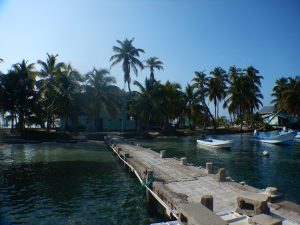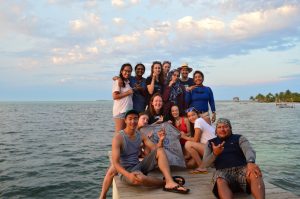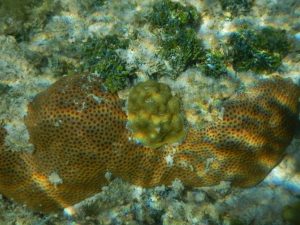Wow its already time to wrap up and reflect. It almost feels too soon. Well here it goes…
The rainforest and the coral reefs on the outside appear very different, but upon closer inspection are very similar functioning ecosystems. Most notably, these ecosystems function and form in nutrient poor environments. In the rainforest, the soil lack nutrients and is acidic while the coral reefs are surrounded by nutrient poor waters. Paradoxically, they are also both nutrient rich environments. In both cases, the nutrients come from the organisms themselves rather than the surrounding environment. The nutrients within the tropical rainforest come from within the organisms living there, especially the trees. Nutrients are made accessible when things begin to break down. Those nutrients are quickly recycled into other life forms, allowing for such high biological diversity in the tropical rainforest.
A similar process occurs in coral reefs, as corals and algae provide the nutrients to sustain other life forms living on the reef (rather deriving nutrients mostly from the water). They also use a form of nutrient cycling to maintain the nutrient levels that allow coral reef to have such high biological diversity. You can observe this cycling between the genus of green algae, symbiodinium, and hard corals. Green algae photosynthesizes to provide nutrients for the coral and in turn uses the corals’ waste products to feed itself. In both ecosystems, the nutrients in derived and conserved within the organisms rather than the surrounding environment. This allows the ecosystems to maintain such high nutrient and biomass levels which in term allows for high biological diversity in both ecosystems.
In addition, I also noted several other comparisons between the two ecosystems. Both involve intense competition for space between organisms. For example, different trees grow in the same space depending on the state of the area. Corals and algae compete for the same space on the reef. Both are also plagued by poaching issues from other neighboring counties. Both ecosystem provide ecological services to humans from protection from erosion to wood to providing healthy populations of seafood. Conversely, they also have notable differences in addition to the obvious differences in appearance and mediums (water vs. land). Coral reefs directly rely on and interact with surrounded ecosystems like mangroves and seagrass while the tropical rainforest tends to exists as its entity. Coral reefs can also function as fragmented ecosystems in a way as there can be several reef patches within an area that interact while the tropical forest in the Chiquibul is less fragmented.
Overall, this course exceeded my expectations. I learned so much not only about the environments we explore, but also about the impact these ecosystem have on current human civilizations. I unexpectedly also learned an incredible amount about the Mayan people and their culture and how their decline is something we should learn from in relation to our current climate issues. My favorite parts of the course included taking data for our projects and simply waking up to such beautiful morning scenery. If I’m being honest, my least favorite part of the course was actually writing these blogposts at the end of the day because I was so tired from all of the activities we had done during the day. Every night was late night.
In the end, I would call this experience one of the most valuable in my life up to this point. I learned that we truly don’t understand much about the environment outside of civilization. As a result, we fail to wrap put heads around the importance of these environments. We then litter, overuse resources, and take things from where they belong to be used as pets or “pretty things”. These environments aren’t just things that function independently from us and us from them. We are as much a part of nature as everything else, and when our actions result in a negative impacts on these ecosystems, it won’t be long until we feel the effects of those impacts.
I also learned that environments are constantly shifting. What I saw in the tropical rainforest and coral reefs this year will not be what future classes observe. For example, hurricanes are major force in reshaping both landscapes through fallen trees and broken corals. No hurricane has the same effect. Some can be good as fallen trees gives way to new ones and broken coral branches begin to regrow in new areas of the benthos. They can also wreck havoc. These landscapes are made to alter and adapt, and what I saw was complexity unique in itself.
Finally, I learned these environments are disappearing so much faster than I thought. Most of us know that corals are bleaching and people are cutting down the rainforest, but most of us fail to truly understand the rate and severity until you see it. Until you see the effect, you don’t realize how fast it is happening. We saw so much dead coral rubble and so much marine debris. It’s a really sad idea to end on, but the up side of it is that it made me really appreciate this experience more than I would if I felt like this ecosystem weren’t going anywhere. In other words, seeing the decline of these ecosystems allowed me to get the most out of this class.










